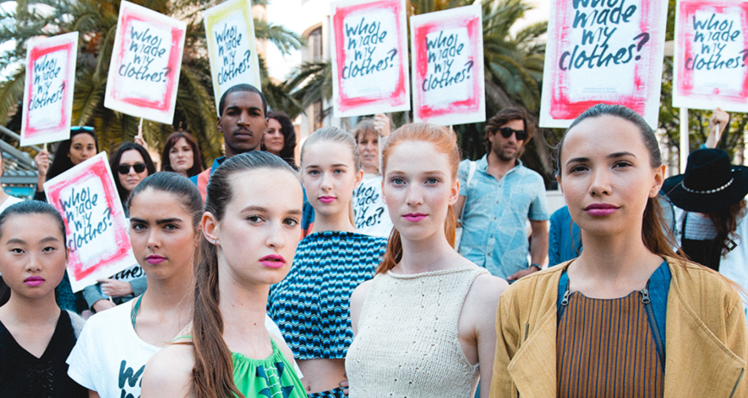
In the world of fast and cheap fashion, you have to pause a moment, take a deep breath, slow right down and take the road less traveled to find the world of ethical and sustainable fashion.
Let’s face it, it’s much easier to walk into Forever 21, H & M or Zara and mindlessly pick up trend-driven pieces at very low prices. In fact, we have gotten so accustomed to it that we expect prices to be low without realizing what this really means. Price has become the driving factor by disassociation because if you knew that your $20 top and $40 trousers were made by a child or in unsafe working conditions for extremely low pay, you might make a different decision.
The fashion industry and the marketing of fashion play a large role in the acceleration of the fast-fashion cycle by churning out more and more collections purely to increase revenues. Whether fast-fashion or luxury, this breakneck pace places tremendous pressure on fashion designers to pump out up to 16 collections per year and hence why designers such as Raf Simons and Alexander Wang have resigned from their posts, in recent months. Remember the public unhinging of John Galiano who was charged with making racist and anti-semitic rants directed at a couple in a Paris bar? During his trial, he described the “stress of the fashion industry and the success of Dior and how he could not cope without alcohol or drugs” (Chrisafis, 2011).
In 2013, the Rana Plaza garment factory in Bangladesh collapsed killing 1,130 workers who were crushed by the eight stories of concrete that fell on them. A BBC article by Shahnaz Parveen in 2014, tells the stories of several workers who were injured. One worker Sharmin Akter describes her ordeal:
“I never wanted to return to this work. But I don’t know anything else. The first day I returned to work, the deafening noise of the sewing machines made me so scared that I wanted to leave right away.
“The other night I dreamt that this factory also collapsed. Sometimes I wonder whether I would live if this factory also collapsed.
“God saved me once. How many times do you think God would save me?”
In reaction to the Rana Plaza disaster, the non-profit organization Fashion Revolution decided to do a social experiment to see how many people would buy a 2 Euro T-Shirt, if they knew how it was made. Watch the full video here.

The video challenges people to think and to ask questions about who is making their clothes and ultimately, for people to start demanding more from fashion brands – more accountability and more transparency.
Luckily, the tides are starting to change, as social media drives conscious consumerism. No longer are consumers just being seduced by the latest trends, they are starting to care about how their clothes are produced and the materials used. This is coupled with the growing choice of ethical and sustainable brands offering cool, well-designed, trend-driven styles but who also focus on fair trade, sustainable fabrics, transparent supply chains, avoiding hazardous dyes, recycling, zero waste or partnering with developing nations. It’s a win-win-win scenario.
Let’s be clear though, to embrace sustainable fashion, we have to let go of the notion that we can buy a top for less than $20 or jeans for less than $50 because if it is, then the person (usually a woman) is working in unsafe conditions and not getting paid enough to feed themselves.
OK with that out of the way, I will leave you with some work to do, but it’s pretty easy. All you have do is click on the links below and learn about the following 10 brands that are lighting up the ethical and sustainable fashion world with exciting styles and a refreshing vision. I guarantee you won’t be disappointed!
Useful info! Will check out those links.
Lately I’ve been thinking a lot about where all the discarded stuff ends up. It used to be the “rag and bone” tradesmen would collect all the old textiles and recycle them somehow. I wonder if there’s a modern equivalent. Hope all’s well out your way,
xo Jen
LikeLiked by 1 person
Great article! We do need to step back and understand what cheap implies. Thanks for sharing.
LikeLiked by 1 person
Thanks Attitude Organic, yes it is easy to buy the standard mall brands but there are such an array of new sustainable brands to choose from.
LikeLiked by 1 person